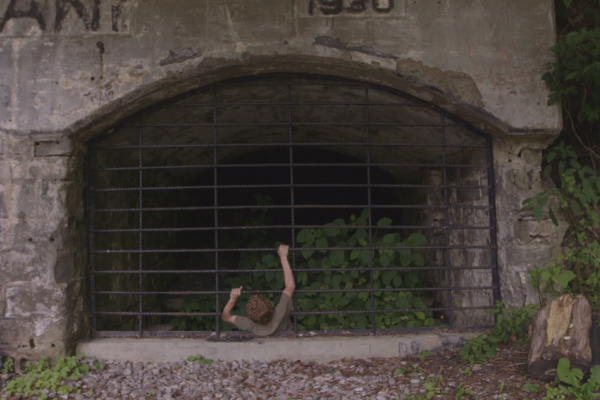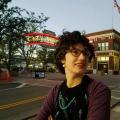Film director Brett Story's The Prison in 12 Landscapes explores the effects of the American prison industry on communities and individuals across the country. The documentary film’s subjects range from a rural community in Appalachia that depends on prisons for employment, to gentrification in Detroit, to systemic oppression in Ferguson.
The Prison in 12 Landscapes made its world premiere at this year’s True/False film festival in Columbia, Mo. Sojourners spoke to Story about the film, her experiences researching and making it, and her plans for the project moving forward.
This interview has been edited for length and clarity.
Abby Olcese, Sojourners: How did you begin working on The Prison in 12 Landscapes? Did you originally plan on covering a broad spectrum of communities?
Brett Story, director, The Prison in 12 Landscapes: I was always going to make a film about prisons, but from the outside of the prison itself. I wanted to challenge the alienation we feel by seeing prisons simply as buildings we have no relationship to.
I had originally thought I was just going to set it in one city. For example, when you look at the prison population in New York State, a lot of those prisoners come from a small section of neighborhoods, and I was originally thinking of setting the film in those places.
I ended up going on a longer journey, with a goal to disrupt the identity of these areas we think of as “free,” to reveal how deeply prisons influence our lives in all spaces. Ideas just kind of developed from there. Some of them were easy to find, some required research, some were anecdotal leads we followed up on.
Olcese: What did you learn from your research and experiences making the film that surprised you the most?
Story: I originally went to Appalachia because a friend does abolition work there, and he told me that the population was desperately poor, and that their anxiety and poverty was harnessed into their aspirations for prison jobs. The prisons were building on all these former coal mines, and so the population were essentially trading one form of dirty work for another.
I found that the people there wanted prisons for the work they brought, but they weren’t demonizing the people inside. People there were really against mass incarceration, but to them that was a separate issue from wanting a prison in their town. I found they compartmentalized their ideas, which I really wasn’t expecting.
Olcese: One of the portions of the film that moved me the most was the section about a female prisoner who was working as a forest firefighter in Marin County. Can you tell me more about the program she was part of?
Story: That section actually came from transcripts of several interviews, read by an actress, because we couldn’t film our interviews with the prisoners. 40 percent of California’s forest fires are fought by prisoners. They’re only paid $1 to $2 a day, and there are separate camps for women and for men. It’s definitely exploitative, but everybody actually wants to go to these fire camps, because it gives them a little taste of freedom. They feel like heroes while they’re doing that work, but in the rest of their lives, they’re treated as less than human.
When they leave, they don’t get credentials. They get skills, but once they’re out, they have less of a chance than anyone of getting a job. They have no support.
Olcese: A large part of the film involves Quicken Loans’ gentrification of Detroit, which you connect to the 1967 Detroit riots. Can you tell me a little more about their role in the film?
Story: I wanted to provoke new kinds of thinking about the criminal justice system with this movie. What is it about? To me, a big part of it, actually, is about safeguarding property. As neighborhoods are being gentrified, you see an increase in arrests, you see homeless people being arrested.
Dan Gilbert (of Quicken) is making an enclave of wealth in Detroit. He’s got this room that’s apparently filled with security cameras filming the area, and initially I was interested in having that be a scene in the film, but that didn’t work out, and we got a tour of the campus instead.
So part of it was gentrification, part of it is the economy and the fact that Quicken makes their money from mortgages, and part of it was the tie that it had to Detroit in 1967 (Note: in an earlier Q&A session at True/False, Story said that she considers laws passed after the Detroit riots to be a major factor in the genesis of mass incarceration ).
Safeguarding property in this situation means that (Quicken is) partnering with police and supporting militarization and increasing brutality and arrests.
Olcese: Are there any stories you wish had made it into the film that didn’t make the final cut?
Story: I did some research on prison doulas in Massachusetts and Minnesota. They give support to women in prisons giving birth. Women are forced to give birth in shackles, and then they have their baby taken away. These programs train people to go to prisons and hospitals to help them give birth. I’m actually thinking of making a short film that focuses specifically on that story.
Olcese: What’s the reaction been to the film so far?
Story: It’s been really good, people have really responded. People have had questions, but just as many have had comments. I’m grateful for those because it tells me how the film lives in people’s minds. People are engaged, and they want to talk about it with me.
Olcese: What are your plans for your documentary moving forward?
Story: I find festival exposure really helps give a project life, so that’s what I’m doing right now. It’s going to New York, then the Ann Arbor film festival, and then Hot Docs. It’s an artful film, meaning it’s not an easy advocacy tool, but I’d like to try and make it available to people who can organize screenings for groups and communities. I’d also like to try and make a few short films with some of the content.
The Prison in 12 Landscapes is currently making rounds on the festival circuit. You can learn more about the film and see a trailer here.
Got something to say about what you're reading? We value your feedback!

